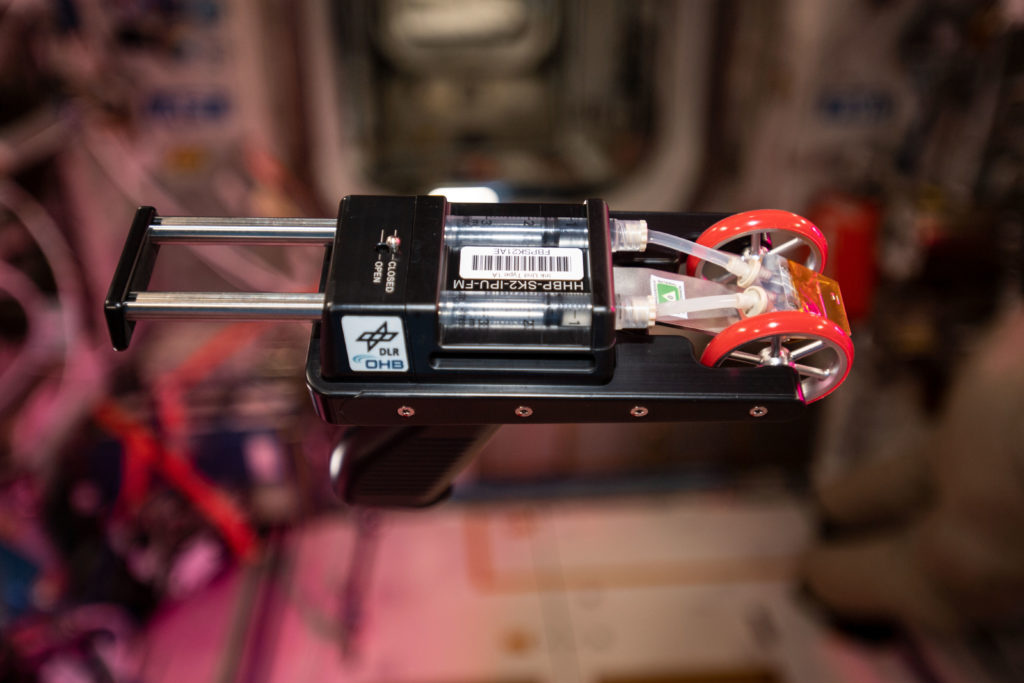Technology demonstration of a handy, compact bioprinter for treating wounds in space and on Earth
During long-duration space missions, skin injuries must be treated quickly and effectively. Bioprint FirstAid is an innovative, hand-held bioprinter designed to treat superficial wounds by directly applying a tissue-forming bio-ink with the body’s own skin cells. The bioprinter is used to cover the wound like a plaster and accelerate healing. In the future, this technology will be used in space exploration missions as well as for humans on Earth.
The bioprinter was developed by OHB System AG on behalf of the German Space Agency at DLR in collaboration with scientists from TU Dresden and will be on display in the Space Pavilion at ILA 2024. This is the first time that a compact hand-held device has been tested to cover superficial skin injuries by directly applying a tissue-forming bio-ink over a large area, thereby accelerating the healing process. With the help of the handy, compact bioprinter, this wound treatment can be carried out on the spot by the injured person themself within a short period of time. German ESA astronaut Matthias Maurer successfully tested the technology demonstrator during his mission on the International Space Station ISS. The robust and fully hand-operated bioprinter consists of just a handle, a dosing device, a print head, guide wheels and two bio-ink cartridges. No real cells were used for the experiment, but rather fluorescent microparticles. During the printing process, the bio-ink forms a plaster-like wound cover from two rapidly hardening gels. During the experiment, the bio-ink plaster was printed on an astronaut’s leg covered with foil and sent back to Earth for further scientific investigation. At the same time, ground tests were carried out with human skin cells and compared with the printed ISS samples. Bioprint FirstAid was used to test the printing technology under space conditions, assess its applicability and initiate further development for future exploration missions and for use on Earth.
Links:
German Aerospace Center (DLR)
German Space Agency at DLR, Research and Exploration
E-Mail contact-dlr@DLR.de

